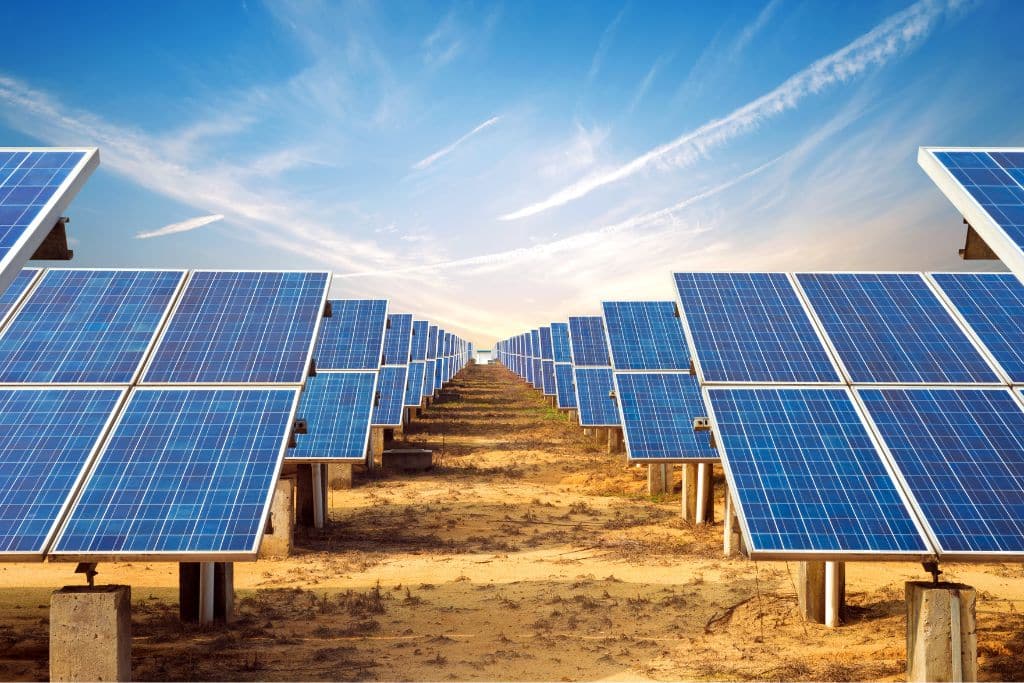Modern technology can help us protect the environment and live a more sustainable life. Recent technological innovations, like 5G networks and blockchain technology, can support global efforts to transition to cleaner energy sources. Similarly, AI-integrated remote sensors can help prevent environmental degradation and support climate science efforts. We explore 10 groundbreaking technological innovations that can help us speed up the green transition.
—
Most modern technologies exist in conflict with environmental protection efforts. Cars produce billions of tons of carbon, factories emit harmful gases that damage the ozone, and agriculture is responsible for widespread environmental degradation and methane production.
However, the tech of tomorrow can help us live in synergy with the environment. Electric vehicles, blockchain carbon trading, and increased digitisation mean that we can lead lives with less waste and minimal use of fossil fuels.
Modern technology may even undo some of the harm we have caused. Remote sensing helps environmental protection organisations monitor vulnerable ecosystems and “carbon farming” helps us store greenhouse gases in farmlands.
10 Technological Innovations That Help Protect The Environment
1. 5G
First on our list of groundbreaking technological innovations is 5G, a technology that offers internet users high speeds and low latency. This powerful tech can support remote working conditions and take more cars off the road. Those who have access to the web via 5G can work from anywhere in the world and do not have to join the ever-increasing queues of carbon-emitting commuters.
5G can help prevent wildfires, too. AI-powered fire detection devices can be connected to a wider Internet of Things (IoT) to detect and transmit visual data back to specialists for quicker response times. This can help combat forest degradation and support vulnerable ecosystems.
2. Electric Vehicles
Electric vehicles (EVs) are without a doubt one of the most important technological innovations of our lifetime.
While they do generate some amount of carbon during the manufacturing and charging process. However, as we increase our use of renewable energy, the carbon cost of running an EV will inevitably decrease. This means that EVs should be an integral part of our larger move away from fossil fuels.
EV batteries can be recycled, too. The first generation of EVs is approaching the end of its life cycle and investors like Redwood Materials are keen to clean up the scraps. This is both lucrative and good for the environment. The value of old lithium-ion batteries means they won’t end up in landfills and, instead, will be part of a closed-loop recycling stream.
While electric vehicles offer a better alternative to fossil fuel-powered ones, the road to making them fully sustainable is still long. You can read more about the topic here: The Environmental Impact of Battery Production for Electric Vehicles
3. Green Construction
Construction companies around the globe are turning their attention to more sustainable materials. According to a poll, over47% of firms are planning to utilise some form of green construction in the coming years. These “green buildings” are expected to reduce CO2 use by 34% and can save 40% of all water use.
Green construction can protect wildlife, too. Buildings laden with beehives and wildflower roofs are a safe haven for insects and birds. This can create a network of miniature green spaces that can help struggling animal populations regain a foothold in an increasingly urbanised world.
You might also like: 5 Ways the Construction Industry Is Getting Greener
4. Digitisation
Digitisation has improved the operational efficiency of businesses around the world. Going paper-free is great for the environment, too. Increased digital adoption has led to a reduction in paper production. This means that fewer trees are felled in the name of productivity and paper producers are diversifying their offering by sourcing their raw materials from sustainably managed woodlands.
5. Internet of Things (IoT)
The Internet of Things is revolutionising agriculture. Agricultural IoT technology ensures that farmers use the correct amount of fertiliser and pesticides. This can prevent unnecessary ecological damage and reduce waste caused by land mismanagement.
Agricultural IoT tech can monitor soil quality and support precision watering, too. A field laden with IoT sensors knows exactly how much watering crops need and can help farmers mitigate waste.
6. Rainwater Harvesting
We are rocketing towards a climate catastrophe and droughts are becoming increasingly common. We need to adopt rainwater harvesting technology that can ease the strain placed on our water tables.
Rainwater harvesting technology can be installed in every home to produce clean, drinkable water from surface runoff. High-tech harvesting systems can turn rainwater into potable water. While this reactionary approach will not solve the climate crisis, it can still help us direct water to those in need.
7. Blockchain
Carbon offsetting has come under scrutiny in recent years. However, the practice still resembles an opportunity for sustainability-oriented businesses to reduce their carbon emissions.
Blockchain technology is a secure ledger that underwrites cryptocurrency and some carbon markets. This secure form of tracking ensures that carbon credits aren’t counted twice and can help facilitate clean energy trading.
You might also like: 7 Ways in Which Blockchain Technology Can Improve Carbon Trading Transparency
8. Remote Sensing
Climate science is key to environmental protection and the reduction of greenhouse gases. Today, remote-sensing technology bolster efforts to preserve wildlife and track the impact of climate change.
Remote sensing technology utilises drones and satellites in conjunction with cloud-based technology to weave together data from various sources. This gives policymakers a more informed view of environmental degradation and ensures that climate protection organisations have all the information they need.
9. Solar Panels
Investment in renewable energy has grown steadily in the past few decades and according to the International Energy Agency (IEA), renewable energy will become the largest source of global electricity generation by 2025 and by 2027, the world will have twice as much renewable capacity as in the previous five years.
Despite these promising estimates, the solar panel supply chain will need overhauling in the coming years. Polysilicon – a key raw material in solar panels – is largely sourced from Xinjiang, a region in Northwestern China that is infamous for its poor human rights record. Additionally, Chinese manufacturers use carbon-intensive methods to produce and ship that panels.
Clearly, much must be done to ensure that labor regulations are put in place. This will require a multinational approach to regulation that may have an impact on the affordability of solar panels.
You might also like: What Are the Advantages and Disadvantages of Solar Energy?
10. Wind Farms
Wind farms are a promising method of energy production. They can be erected off-shore and in areas of open land.
Wind power works via kinetic energy. Wind pushes the turbines and a generator is used to turn this mechanical power into electricity. Currently, wind turbines are between 30-45% effective and have a minimal carbon footprint. Their minimal ecological impact makes them a favourable alternative to hydroelectric dams, which have a massive impact on the local ecosystem.
Conclusion
The technology of tomorrow can solve the climate crisis. Solar panels and wind farms generate massive amounts of renewable energy that improve the efficiency of EVs and make green construction possible. Widespread digitisation also means that more people can work from home and reduce their personal emissions. Adopting the digital revolution is key for environmental protection efforts, too, as IoT technology can minimise agricultural waste, spot wildfires, and reduce the use of harmful fertilisers or pesticides.


















